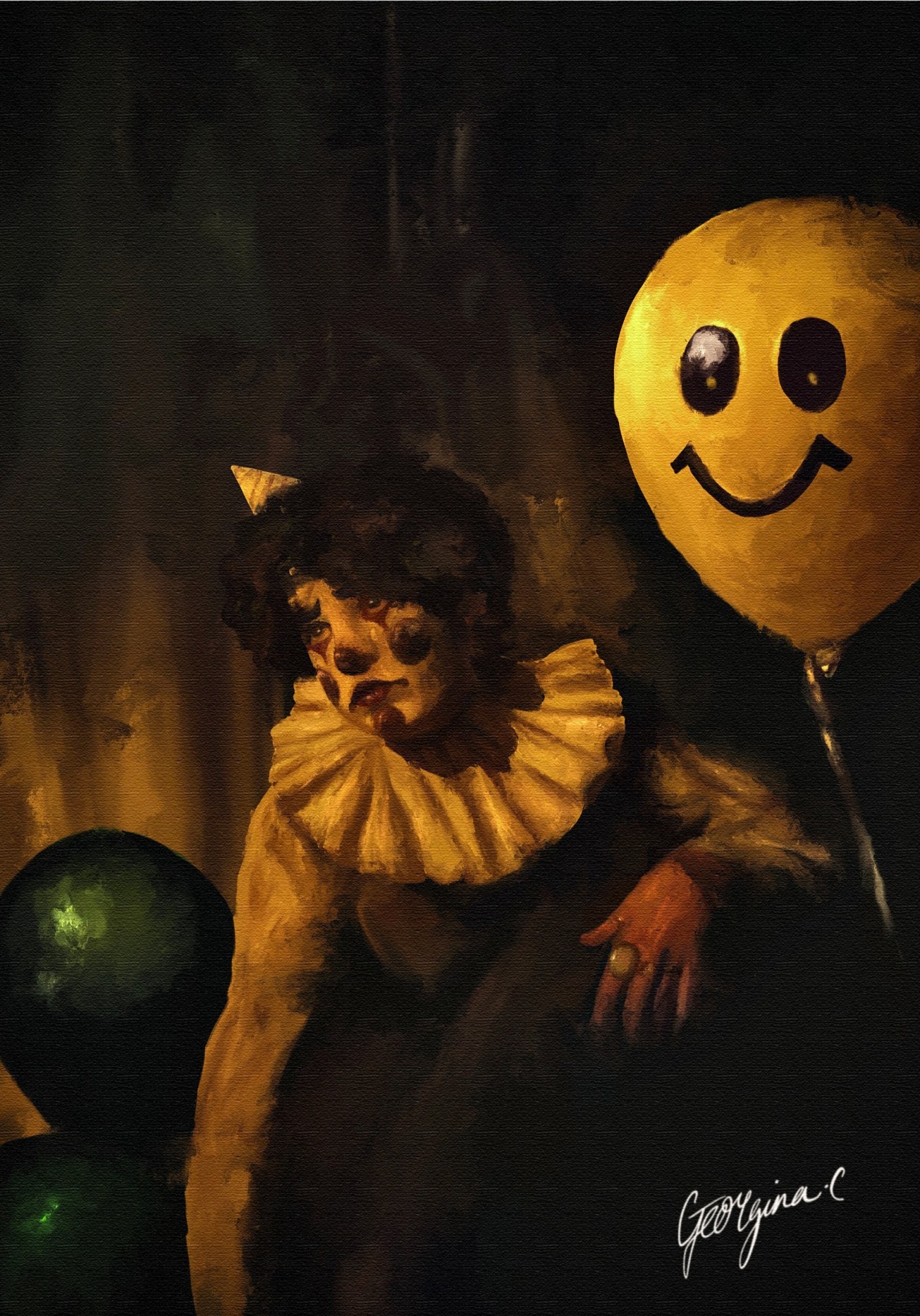
Humour's Veiled Refuge (2023)
Humour’s Veiled Refuge (2023) examines the performance of joy as a form of self-defence. Through Baroque chiaroscuro and symbolic theatre imagery, Georgina M. Cox explores how humour can conceal exhaustion, turning the mask of comedy into a quiet cry for empathy.
⤷ When I painted Humour’s Veiled Refuge, I was thinking about how often laughter becomes armour — how humour is both a language of survival and a disguise for pain. The image of the clown has always fascinated me: it’s tender and grotesque at once, suspended between the urge to entertain and the need to disappear.
The figure slumps in a pool of amber light, their makeup smeared, their costume wilted. Beside them floats a yellow balloon stamped with a perfect smile — a caricature of happiness that feels almost menacing in its cheerfulness. That juxtaposition became the emotional centre of the painting: the quiet tension between authenticity and performance, exhaustion and expectation.
The composition borrows from Baroque portraiture — deep shadows, theatrical drapery, a single directional light — but subverts the religious reverence of that tradition. Instead of sanctity, the subject embodies spectacle. The chiaroscuro isolates them in a kind of emotional spotlight, echoing how we illuminate performers but rarely see the person behind the act.
The balloons, rendered in near-metallic tones, function as stand-ins for the audience. Their presence amplifies the figure’s solitude. The exaggerated ruff and small party hat reference historical commedia dell’arte, connecting centuries of painted jesters to the modern culture of masking discomfort with irony.
Thematically, Humour’s Veiled Refuge continues my exploration of emotional duality — how something outwardly light can carry unbearable weight. It’s about the private aftermath of performance, the moment the smile slips and the room goes silent. The painting asks what happens when humour, once a refuge, becomes another cage.
In tone and palette, I kept the colours warm but suffocating: golds and browns darkened with black, the light flickering like a dying stage lamp. I wanted it to feel intimate yet claustrophobic — a portrait of collapse painted in the language of celebration.
Ultimately, this work is about visibility: how easily we mistake presentation for peace. The clown’s expression isn’t seeking pity; it’s asking to be seen beyond the costume. Humour’s Veiled Refuge is the sigh that follows the joke — the space where honesty hides.
0 Comments Add a Comment?